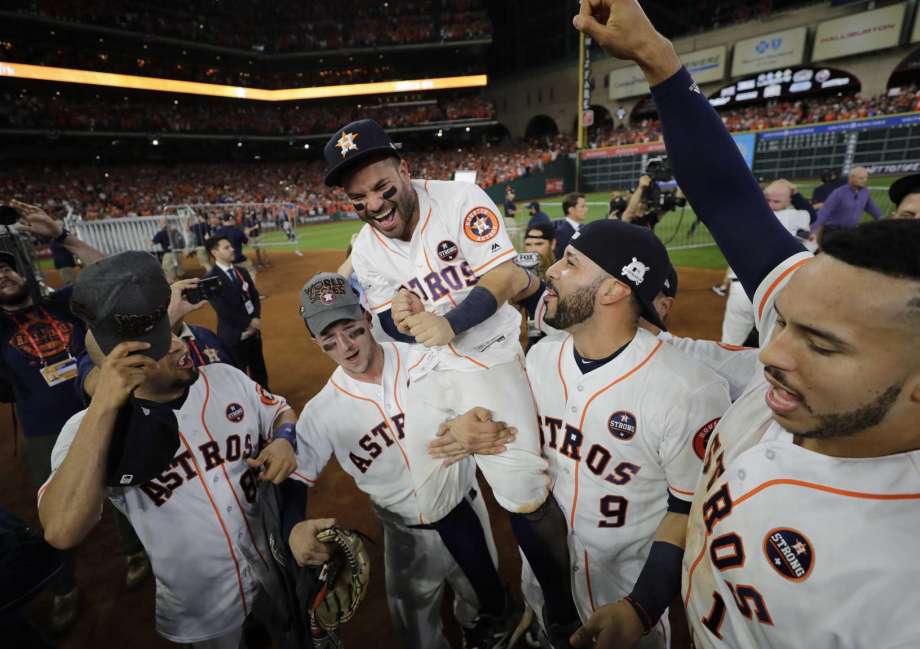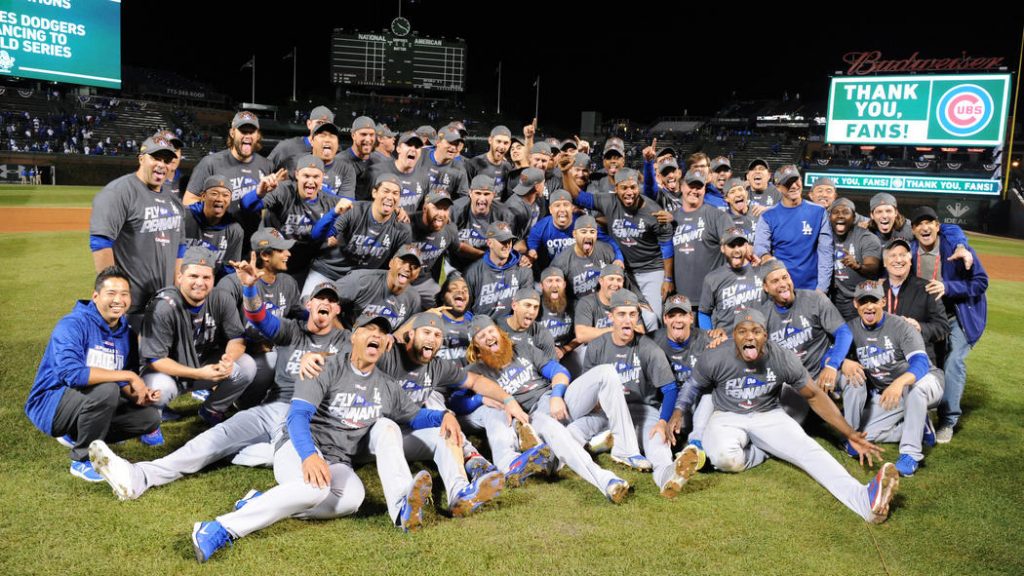
Game 1 of the World Series will be played at Dodger Stadium, but considering the assembled brain power that could give NASA a run for its money, it’s a wonder why the Los Angeles Dodgers and Houston Astros aren’t playing this on the moon.
In an era when every franchise allocates significant resources into analytics, no clubs do it better – and perhaps more exhaustively – than your World Series participants.
Keep a close eye on the Dodgers this series, and you’ll see a bat boy occasionally sprint to the outfield during pitching changes, huddling with the outfielders, making sure they’re in proper positioning, just in case they left their cheat sheets on the bench.
The Astros’ front office actually calls their offices the Nerd Cave, where they hired an ex-NASA engineer, Sig Mejdal, to become the Astros’ director for decision sciences.
Their brain power got them to the finals of this 2017 baseball season, and for the first time in 47 years, we have two teams meeting in the World Series that have won at least 100 games during the regular season.
Yet, don’t let those algorithms fool you.
They may hate to admit it, but neither of these two teams would be the last ones standing if not for chemistry.
No, we’re talking about Bunsen burners, beakers, protons and neutrons.
“I had always heard stuff from afar, and once I got here and started connecting with the team.’’ Dodgers president Andrew Friedman said, “it was a pretty consistent theme. And being able to live it, it was extremely apparent. We had to change our clubhouse dynamics.
“Now, you look and this team, and the dynamics among this group is unlike any I’ve ever seen. It’s also why we’ve had success bringing up talented young players over the last couple of years and have had success pretty quickly. That’s attributed in large part to our clubhouse environment.’’
Go ahead, call it covalent bonding if you wish, but it’s a matter where everyone actually enjoys being around one another, supports each other, and act like an actual team instead of 25 test tubes.
“The numbers are very important here,’’ Dodgers reliever Tony Watson says, “but I also think you can’t just throw away the clubhouse culture. We’re not robots.
“There are a lot of personalities in here, but the fact we get along so well here is extremely important to our success. It’s infectious.’’

While the Dodgers have had baseball’s highest payroll for three seasons, the eight position players in Game 5 of the NLCS that knocked off the defending World Series champion Chicago Cubs earned just $30.1 million. That’s a testament to the baseball operations department’s ability to develop and overturn talent.
It’s also a reflection of a team closer-knit than your local Boy Scout troop.
The Dodgers no longer have a clubhouse filled with Hollywood stars, but baseball rats.
Friedman, a former analyst at Bear Sterns and Co. and GM Farhan Zaidi, an MIT grad with a Ph.D. in economics, identified and weeded out the selfish players in the organization, brought in the likes of Chase Utley, Kike’ Hernandez, Chris Taylor, Charlie Culberson, Austin Barnes and Logan Forsythe, and a championship team was born.
“I give a lot of credit to Andrew and Farhan because when they got here,’’ says All-Star closer Kenley Jansen, “they cleansed the system. It wasn’t always like this. Not even close.
“We became a very close team, and that’s why we’re here. It’s why I wanted to come back here.’’
Sure, the Dodgers and Astros still lead the free sports world in data. Their pitchers know exactly what pitch to throw at what time in what count to every hitter. The players know exactly where to position themselves based on the pitch to the count to the weather patterns. But no amount of talent, they learned, will overcome divisiveness.
“They provide us with all those metrics and scouting reports,’’ says lefty starter Rich Hill, who has pitched in eight organizations, “and it can get us as detailed as you want. Not only with heat maps and hot and cold zones but all of the way down to swings and misses on any type of count, any time of situation, whether it’s weather, ballparks the umpires, who’s behind the plate.
“But there is no quantifying how important it is to have the right guys in the clubhouse. I’ve always believed that. You can get the most talented guys in the room, and it doesn’t mean you’re going to be successful.
“Front offices are now realizing that even more and more now.’’
There’s a reason why the San Francisco Giants won three World Series titles in five years when never once did they have the most talent. It’s why the Cubs were so desperate to re-sign catcher David Ross after he hit .184 with 15 RBI in 2015, and see him help the Cubs to their their first World Series title in 108 years.
And why the Dodgers were infatuated with landing Utley two years ago when he was hitting .217 with the Philadelphia Phillies. Or why the Astros regarded 40-year-old DH Carlos Beltran as the final piece of a process transforming a 111-loss team four years ago to American League champions.
“We believe in people,’’ Astros manager A.J. Hinch says. “We believe in scouting. We also are forward-thinking in gathering and using information.
“But it’s the players’ job to develop the chemistry, and when you have it, you want to hold onto it, as much as possible.
“We do understand and appreciate,’’ Hinch said, “the human element.’’
It remains a game at its core, and Tuesday night, Game 1 starter Clayton Kershaw will take the ball in a World Series for the first time. The concept moved him to tears in the aftermath of the pennant-clincher.
“When you’re a little kid,” says Kershaw, “you want to go play in the World Series. That’s all you ever dream about.
“I want to win a World Series. And I want to win it with these guys. That would mean everything to me.’’
It is, after all, why they play the game.
This article was republished with permission from the original publisher, USA Today. Follow Bob Nightengale on Twitter and Facebook.